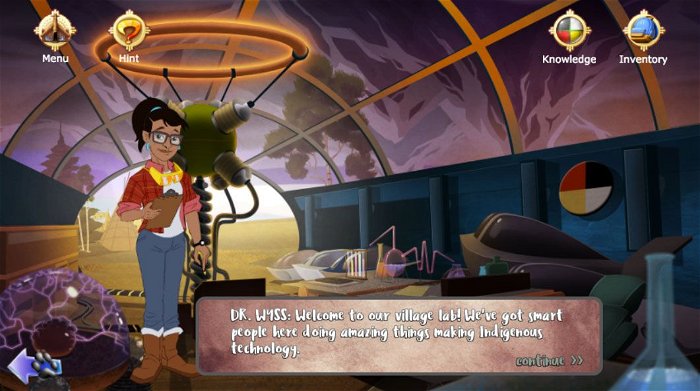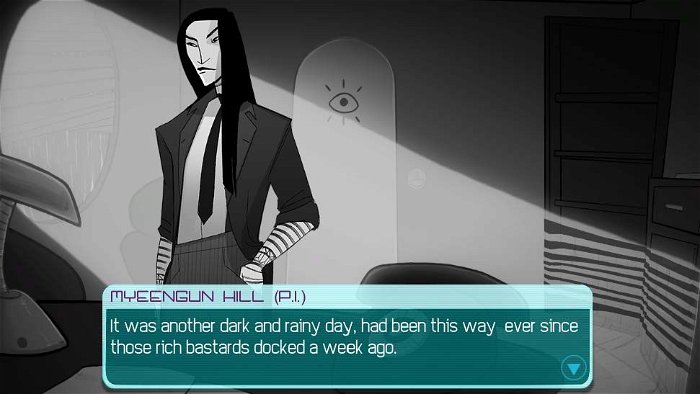ImagineNATIVE is an event that allows Indigenous creators to showcase their projects in a way that may not be possible otherwise.
With the Digital Media Arcade, people from around Canada and beyond can take some time and see work from creators worldwide. One of these creators is Meagan Byrne, a game developer from Toronto. Her work on projects such as Tales of the Blue Valley and more recently on Crime & Punishment shows a talent for the field and her dedication to the craft of game development is inspiring to up and coming creators. In preparation for ImagineNATIVE, CGMagazine had a chance to sit down on a call with Meagan and discuss her work, how ImagineNATIVE helps Indigenous communities, and how she got started with game design.
CGM: How did you get involved with ImagineNATIVE, and how do you think it helps creators like yourself?
Meagan Byrne: This is my third time going to ImagineNATIVE as part of the Digital Media Arcade. My first year I did gaming work; it was their first year or two. I did work in part for Indigicade which was a joint venture between IndigenousRoute and Dames Making Games, which I would say gave an opportunity to people to get in there and learn how to make games.
CGM: What do you think ImagineNATIVE adds to the community that an E3 or GDC fails to provide and why is that?
Meagan Byrne: One thing that ImagineNATIVE has going for it [is that it] allows all media that’s Indigenous and it’s a global Indigenous group, not just North American. In terms of the differences, the arcade is fairly new. So it’s still starting out, I think, much like what GDC was years ago. Which was, “Hey! The bunch of us are in this industry, we have thoughts on things, let’s get together and talk about it.” And it grew into this huge global event. So I see the ImagineNATIVE Media arcade as a really great place to have an opportunity to talk with other Indigenous content creators from around the world.
CGM: What are you most excited for at this year’s ImagineNATIVE, and how do you think the event has evolved over the years?
Meagan Byrne: In terms of how it’s evolved and how I started I think it’s still pretty much the same. We’re going through growing pains and starting to do new concepts despite this fact. Right now it does feel a little we are like reinventing the wheel—it’s a different way of framing content. It’s not like you can have a theatre and sit a whole bunch of people down and watch a game and have the same experience. Yes, there are eSports, but that is a different experience to playing a game yourself or in a group.
This is a creative, experimental way of trying new things. It’s not something that has a base that people can easily understand. I personally believe that with digital media you have to experience it for yourself.
CGM: How do you feel digital media gives creators a way to tell stories that no other media can? Does having the player actually engaging in it give you more freedom to do more interesting and more elaborate things, or do you just feel that it gives you a different tool in your toolbox to tell stories?
Meagan Byrne: I’ve always been a firm believer of the concept that the medium is part of the message. So my first game, Wanisinowin Lost, was a platformer and it had to be a platformer.
The way I was expressing the ideas to the player, it only really made sense in the form of a platformer. The whole thing expresses how you navigate cultural belonging. The thing about platformers is it’s all about the choice whether or not you go for it. So as I said, for myself, the medium informs the message as much as it can be a part of—or indeed be—the message in some cases.
CGM: How do you see ImagineNATIVE evolving going forward?
Meagan Byrne: I think it’s growing. I definitely see more people every year coming in as part of the digital arcade. I see more people who were traditional filmmakers playing around with new areas. I constantly see the question about how we can use digital methods to preserve knowledge or tell our stories. I’m also considering ways we can use it to tell new stories.
CGM: How do you feel Indigenous creators are represented in the field of gaming and the field of interactive media, and do you feel that they could be better and in what ways?
Meagan Byrne: Yeah, we have this conversation a lot. Right now I think mainstream Indigenous creators people know, we pretty much just have John Romero. There’s not really big names out there you can point to, and even he does not do games you can point at and say, “Oh those are the obviously Indigenous.”
I was having this conversation with my sound guy. We were talking about how it’s not even the issue of representation. If you look at the Japanese releases, how Japan is able to control their own message about who they are because they have such a wealth of games that involve their own people who come from like a Japanese place of understanding. So it doesn’t matter how many weird slightly racist ninja games that show up in North America because ultimately it’s just a drop in the pool.
Whereas you have the exact opposite with Indigenous game creators. It is always off or misunderstood whereas the creators did not [fully] understand what they were making and just thought it was a cool aesthetic. Then the games that are coming directly from Indigenous creators, from a place of understanding, only act as drops in the bucket against all the “racist ninja” games flooding the marketplace.
CGM: On that note do you feel there’s a place for Indigenous creators to be part of the bigger system? Do you feel Indigenous people should have a say in all aspects of the chain or do you think it would work for them to be just part of the system and actually help form a narrative from within?
Meagan Byrne: I think both. I think usually when we’re talking to game designers from all over the world, they come from a place where their culture and values are supported by their industry. So there’s not so much a question of, “Do they need to make their own spaces” because they have their own spaces. And then, of course, when they come to America or if they join a company from a different culture and that company happens to misrepresent their culture, it’s how we feel more comfortable because they can also point to, “Here are the games that we make.” You know about us and that kind of stress being the token person working in an office he or she has to be “that guy.” There was a really great talk at damage camp by a Muslim game designer. He talked about how sometimes he does take on those fights and other times it’s not worth it. I honestly think a lot of companies aren’t trying to be awful. That’s not their intention. A lot of times when we see something cool we want to have it and they want to put it in because it appeals to people. But again it comes down to: we as Indigenous creators don’t really have our own space that we’re coming from and are still lacking that base we can share together. I think that’s what we’re trying to work on right now and [what] ImagineNATIVE is starting to offer us. It’s like, “Here’s your base, now go forth and do what you feel comfortable doing.”
CGM: Thank you so much, and where can people find your work?
Meagan Byrne: They can find it online at meaganbyrne.carbonmade.com or on my itch.io page at byrneout.itch.io.







